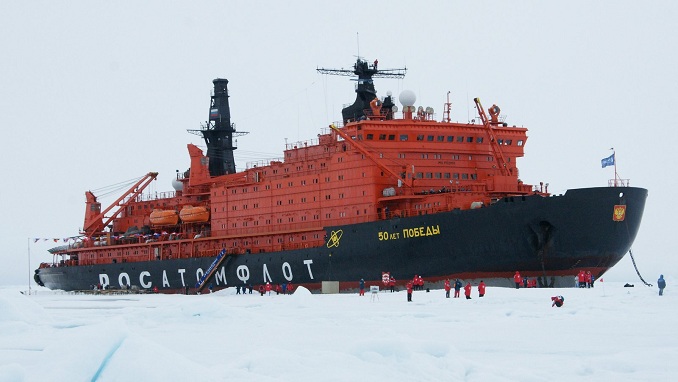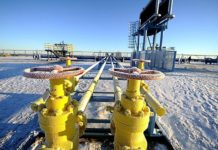Cranes hover above the gleaming Neva River at St. Petersburg’s historic Baltic Shipyard, where hundreds of workers are constructing four nuclear-powered icebreakers.
The massive warships, which are emblazoned with the Russian flag and named after the country’s northern regions, are designed to maintain Moscow’s control over the melting Arctic.
Russia has rushed to establish itself as a dominant force in the region, where diminishing ice cover has allowed Moscow to create a new maritime route.
President Vladimir Putin has prioritized the warming area, spending significantly on the so-called Northern Sea Route, which allows ships to reach Asian ports up to 15 days faster than the old Suez Canal route.
Transit in the eastern Arctic normally ends in November, but Moscow is hopeful that the icebreakers would allow it to use the route, which is becoming more accessible as a result of climate change, all year.
The ships set off from the imperial-era Baltic Shipyard, the origin of all Soviet nuclear-powered icebreakers save one – the Lenin, which is now a museum and moored in the Arctic port of Murmansk.
The four new ships – “Sibir,” “Ural,” “Yakutia,” and “Chukhotka” – will ultimately be stationed there.
The vessels, according to Kirill Myadzyuta, the shipyard’s chief of construction, represent a “great stride forward” in Arctic development.
The ships are built to withstand harsh weather conditions in the Far North, standing 52 meters tall and 173 meters long, and capable of breaking through ice up to 2.8 meters thick.
Russia has made no compromises in order to exploit the riches of the Arctic. Each ship commissioned by Rosatom, the state-owned atomic energy business, costs more than $400 million.
Construction takes more than 1,000 workers and lasts between five and seven years.
According to Leonid Grigoriyev of the world economy department at Moscow’s Higher School of Economics, the icebreakers will be a game changer for Russia’s usage of the Arctic.
While Russia is currently utilizing the Northern Sea Route “intensively,” Grigoriyev claims the eastern Arctic “freezes fully and would be difficult to utilize year-round without the icebreakers.”
The construction of the Northern Sea Route, in particular, could make it easier to carry oil and gas to Southeast Asia by linking the Atlantic and Pacific Oceans in record time via the Arctic.












